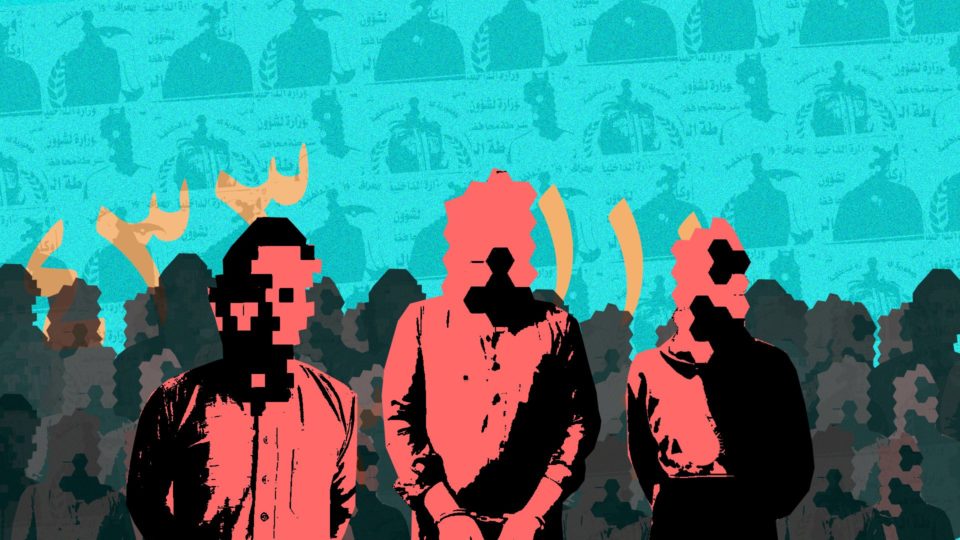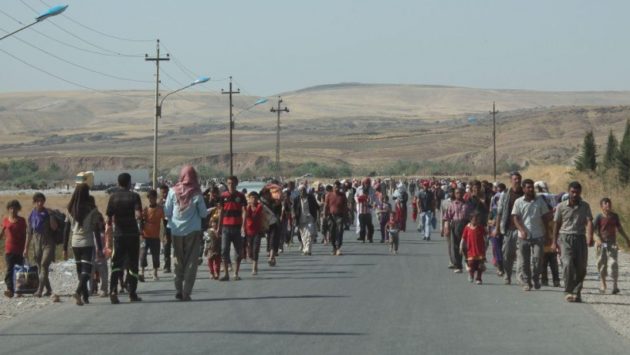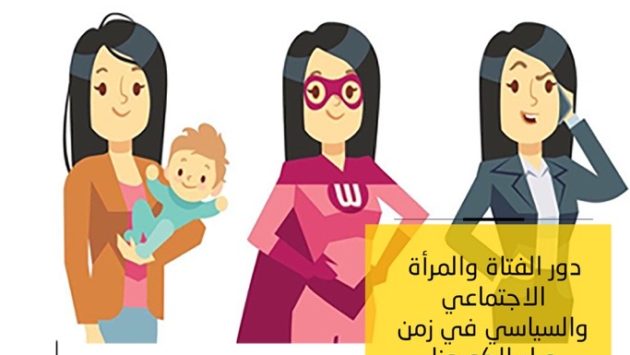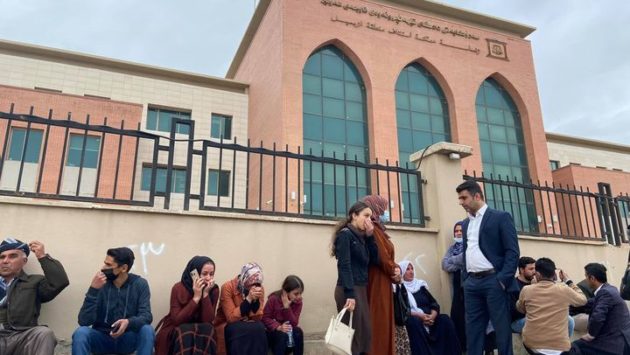Smile for the police camera”: Defamation of Detention Center Cameras
By Ali Al-Nasiri
May 18, 2023
The lives of Ahmed and Wissam were turned upside down after they were falsely arrested and their pictures were taken by the police, which were later published on social media. However, they did not file a complaint in court. “Smile for the camera,” police stations tell civilians, only to defame them later.
Suddenly, Ahmed, who was previously arrested by a security agency, is asked to stand upright and lift his head to have his picture taken. The police informed him that the picture was for investigative purposes. Ahmed had no idea that his picture would be published on the social media platforms, showcasing his capture on charges of fighting and assaulting someone.
This has become a common practice for security institutions, where they publish pictures of suspects upon their arrest as a security achievement, despite Iraqi law affirming that a suspect is innocent until proven guilty.
Ahmed, who was recently released from custody due to a judicial decision based on lack of evidence against him, says he found his picture published on the same date of his arrest, and his friends kept it.
“This is me an hour after my arrest on false charges, in an attempt to harm me for reasons related to my demand for my share of my father’s inheritance,” Ahmed told “Jummar,” referring to the published picture.
He recalls the moment his picture was taken, wearing a Dishdasha and being asked to stand in front of a sign with the name of the security department, while two security personnel surrounded him, lifting his head. One of the photographers took several pictures of him.
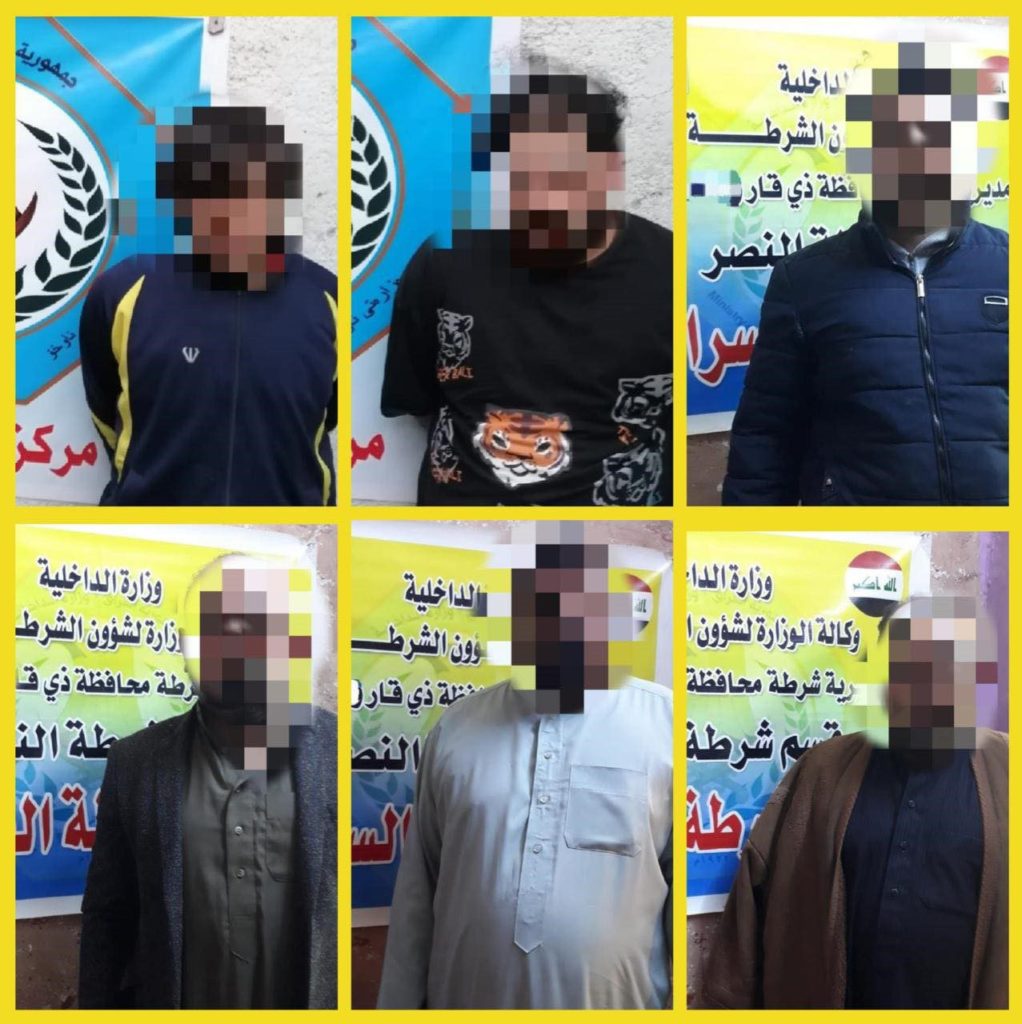
With eyes filled with sorrow and pain, he looks at his published picture and mutters softly, “Allah is against the oppressor.” He lifts his head, pulling his cigarette from between his lips, and the smoke fills the air as he says, “I was taken by a security patrol from one of the checkpoints based on an arrest warrant against me for charges of threats under Article 431.”
He found himself behind bars in a detention center of a security facility, then he was taken to an interrogating officer who subjected him to arbitrary measures and scolded him loudly before being photographed and returned to his cell once again.
He spent a whole month in the detention center while his lawyer pursued the case in the corridors of the courts and before the investigating judges, only for the story to end with his release due to lack of evidence against him. He emerged again after days and nights that felt like years, far away from his family and friends.
The Means and the Purpose
The publication of suspects’ photos has become a systematic method adopted by security agencies for many years, in an attempt to convey multiple messages to the public. These agencies aim to counter the blame directed at them, labeling them as ineffective in the face of rising crime rates.
The leadership of the police in Thi Qar province states that they follow the guidelines of media security to curb crime, including the publication of a shaded photo of the suspect along with their encoded name.
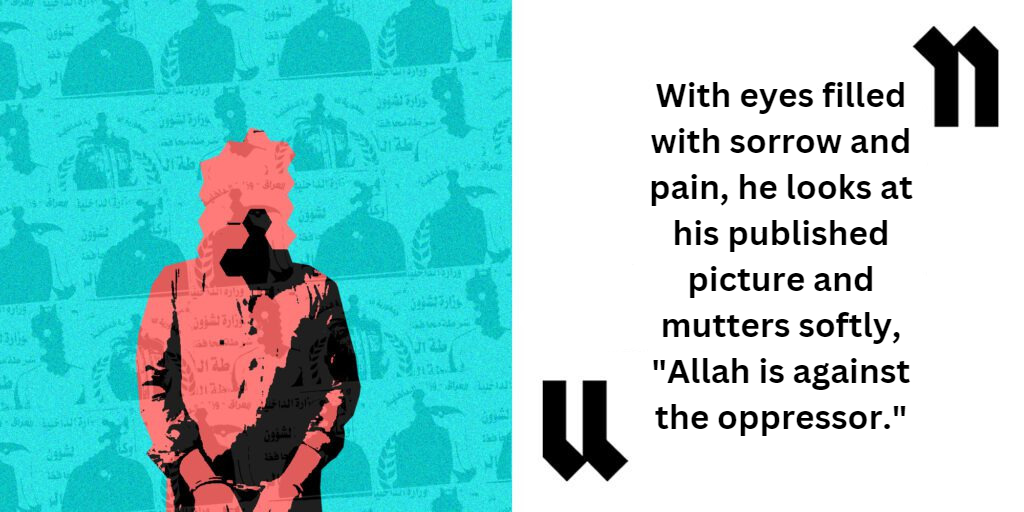
Colonel Fuad Kareem, the media official of Thi Qar Police, states that the publication of the photo is done after completing the preliminary investigation procedures. Due to the lengthy investigation and trial process, which can extend up to six months, security agencies have decided to publish shaded photos of suspects and encode their names. This is done in an attempt to avoid public pressure that blames the security agencies for not publishing the photos of the “criminals” as a deterrent to others.
However, civil society organizations consider this approach a violation of the conditions of respecting the humanitarian and social circumstances that those whose photos are published on social media platforms face, along with various issues.
Activists in these organizations believe that publishing suspects’ photos is an unnecessary act, especially during the investigation stages.
Ali Al-Nashi, the head of the Communication and Brotherhood Humanitarian organization, states, “Many of them are ultimately acquitted, so it is not permissible to publish their photos.” He further adds that many of the published suspects complain of immense psychological harm that befalls them after their release as a result of the photo publication.
The Human Rights Office in Thi Qar expresses its rejection of photographing and displaying suspects in any form, considering it a violation of the dignity of the detainee at any stage of the investigation until a judgment is issued against them. “This is a legally and socially rejected act as it leaves a psychological impact on the detainee and exposes them to future abuse or harassment,” says Dakhil Al-Mashrifawi, the Director of the Human Rights Office in Thi Qar. However, Al-Mashrifawi confirms that the office has not received any complaints from detainees regarding this matter.
Nevertheless, Al-Mashrifawi emphasizes that this procedure is unnecessary as it harms the suspects and puts the security agencies “in the realm of prohibitions.”
During a visit to one of the detention centers, Al-Mashrifawi witnessed pictures of suspects with their full identities displayed on the internal walls of the police station. “The repercussions and psychological impact on a potentially innocent suspect were not taken into consideration,” said Al-Mashrifawi.
He further explains that any detainee whose photo has been published has the right to file a legal complaint against the entity that did so. However, he doubts the responsiveness of the investigating authorities to such complaints. “Investigators still prevent the presence of lawyers alongside the detainee during the investigation stage, so how can they deal with their complaints regarding photo publication?” Al-Mashrifawi sarcastically questions.
He also points out the absence of a post-detention or prisoner care culture aimed at rehabilitating and integrating them into society, as their published image turns into a real social crisis that tarnishes their reputation.
Complaint is a source of fear.
There are provisions in Iraqi law that can be used against police and security personnel who publish pictures of suspects, but there are also obstacles to resorting to the law.
Lawyer Ahmed Al-Zuhairi told “Jummar” that Article 433 of the Iraqi Penal Code No. 111 of 1969 can be adapted to prosecute those who publish pictures of suspects.
This article states that “defamation is attributing a specific incident to another person in a public manner that, if true, would subject the attributed person to punishment or contempt among his fellow citizens.”
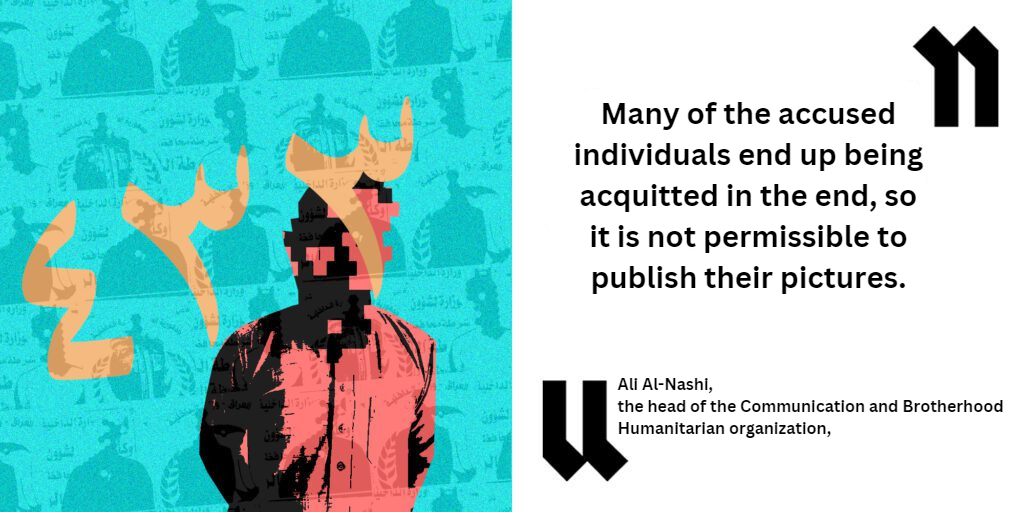
It also stipulates that “whoever defames another person shall be punished with imprisonment and a fine, or with one of these two penalties. If the defamation occurs through publication in newspapers, printed materials, or through other media channels, it shall be considered an aggravated circumstance.”
However, Al-Zuhairi points out that defamation cases have not found a viable path in the corridors of the courts for several reasons. One reason is the fear of those who have been released from approaching police stations to register their complaints. Another reason is the absence of laws that specify the magnitude of the penalties imposed on the complainants, especially when it involves security personnel.
All laws prohibit it
Wissam Karim feared the “consequences” of filing a complaint against the police in Thi Qar, after his photo was published on the “Al-Ayoun Al-Sahira” website, affiliated with the provincial police command, when he was arrested and detained on charges of theft.
Wissam later obtained a judicial decision of innocence from the charge, which he described as malicious, after a six-month trial process.
“My family was greatly affected after the image spread on social media, and my morale was shattered,” Wissam told “Jummar.”
One of the consequences of the publication of his photo was the cancellation of his sister’s engagement, as the fiancé’s family considered him to have a criminal record and unsuitable for their family.
The publication of suspects’ photos continues despite the existing laws prohibiting it.
Kamil Rashad, a legal expert and former judge at the Thi Qar Court of Appeals, told “Jummar” that the constitution is the source of all laws, and any law or procedure that violates it is considered illegitimate, as it constitutes a guide for all legislative, executive, and judicial authorities.
He explained that the constitution, the Penal Code, the Code of Criminal Procedure, the Validity of Events Law, the entire judicial jurisprudence, and the explanations given in the interpretation of criminal cases all prohibit the publication of a suspect’s photo in any media or social networking sites.
“Publishing the photo of the suspect is not a requirement of the right to defense or the interest of the investigation, as it causes harm to the suspect, the law, and the case itself, while acknowledging that the suspect is innocent until proven guilty,” according to Rashad.
The former judge particularly objects to the publication of the photos of detainees under the age of 18 in the media and social media, while Law No. 76 of 1983 on the Care of Minors prohibits that and emphasizes that their trials must be conducted in secret, with exceptions to the general rule of public trials according to Article 63 of this law.
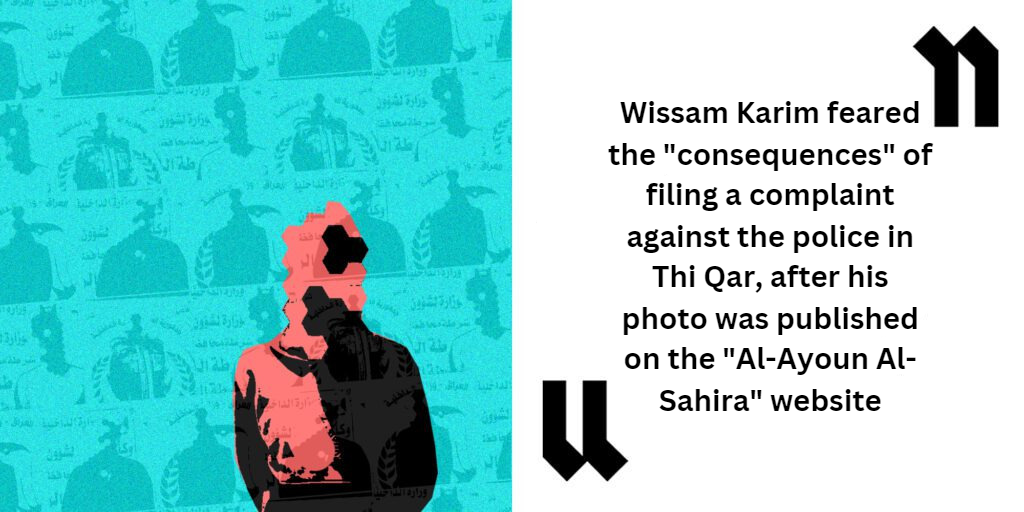
This article states that “it is not permissible to disclose the name, address, school, photograph, or any information that leads to the identification of the accused. Violators of the provisions of this article are punishable by imprisonment for up to one year or a fine of up to 500 dinars.”
The law grants the right to any accused person whose photo has been published to file a complaint against the publishing and promoting entity, such as a satellite channel.
The Legal Committee in the Parliament also rejects the publication of photos of suspects and even convicted individuals because it is related to the reputation of the convict’s family and relatives, not just their own reputation. “We will discuss such issues with the relevant authorities to reach solutions regarding them,” said Raed Al-Maliki, a committee member.
It is unknown whether these supposed discussions will lead to tangible results in a country where authorities do not hesitate to break and violate laws in order to present themselves as active institutions with significant achievements, even if those achievements are merely the arrest of a young person on charges of fighting.
To read the full article on Jummar’s Website in Arabic, click here.

